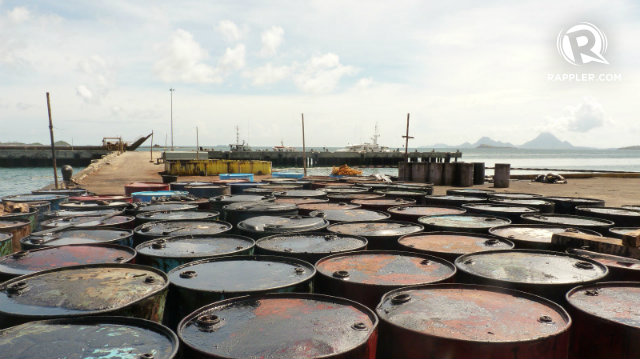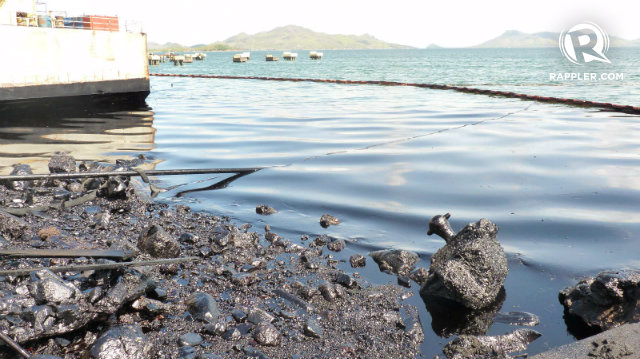SUMMARY
This is AI generated summarization, which may have errors. For context, always refer to the full article.
ILOILO, Philippines – The cleanup of oil that leaked from the punctured hull of a power barge washed ashore by Typhoon Yolanda (Haiyan) in the province of Iloilo faced delays almost a month after the accident, authorities said.
The Napocor Power Barge 103, which contained 1.4 million liters of bunker fuel, spilled about 850,000 liters into the coastline of the town of Estancia.
“We are experiencing some delays because the contractor is having difficulty carrying out the job,” according to Commodore Altheo Ybanez of the Philippine Coast Guard (PCG).
Based on a timeline shared by Ybanez with Rappler, the contractor, Kuan Yu Global Technologies Inc., was supposed to have started siphoning the oil (at a rate of 80,000 liters per hour) using petroleum hoses last December 2.
This would have facilitated the refloating and towing of the barge to a dry dock facility, originally scheduled for December 6, but both operations have stalled.
“There has been difficulty in getting the clean up done because of the equipment. The contractor has not yet deployed its petroleum hoses,” said Ybanez.
Alternative ways
The Coast Guard together with local authorities resorted to alternative ways to clean up the spill like using solvent materials to recover oil.
Skimmers of the Coast Guard were also used to siphon the contaminated water.
“But our skimmers are not as fast [as petroleum hoses] and we can not work during the hours of 10am to 3pm because the sun is at the hottest at this time,” Ybanez admitted.
Forced evacuation
Toxic fumes reached critical levels, according to the Department of Health (DOH), prompting the provincial government to order the forced evacuation of villagers within the 150-meter buffer zone from the spill.
The evacuees, mostly from Barangay Botongon, have been staying in classrooms and tents at the Northern Iloilo Polytechnic College-West Campus since then.
The tent city is now the biggest evacuation center in typhoon stricken northern Panay, According to the United Nations Office for the Coordination of Humanitarian Affairs (UNOCHA),
The need to evacuate more villagers was earlier reported, but Judith Tanate-Barredo of the Department of Social Welfare and Development (DSWD) confirmed this is no longer necessary.
“As of yesterday (Thursday), we confirmed that there would be no need to evacuate villagers from other barangays,” said Tanate-Barredo.

Contamination
Meanwhile, a marine expert explained that the risk of fish contamination might be limited.
“It was bunker oil that was spilled in Estancia. This type of oil is not so soluble. It does not dissolve much into the water. This will limit the risk of fish contamination,” according to Florence Poncet, who is on mission to the Philippines with the European Field Protection and United Nations Development Fund (UNDP).
But Poncet cautioned that only chemical analysis could confirm the contamination, particularly for shellfish living in sediments.
The first indicator of low level contamination would be the smell (of oil) and tainting in the marine life, he said.
“Most of the rest of the oil has now washed ashore, but there is still an estimated 100,000 liters of floating pumpable oil around the barge contained by booms,” said Poncet.
Health experts and local authorities are also on watch for weather conditions like heavy rain and strong winds which could cause additional contamination. – Rappler.com
Add a comment
How does this make you feel?


There are no comments yet. Add your comment to start the conversation.